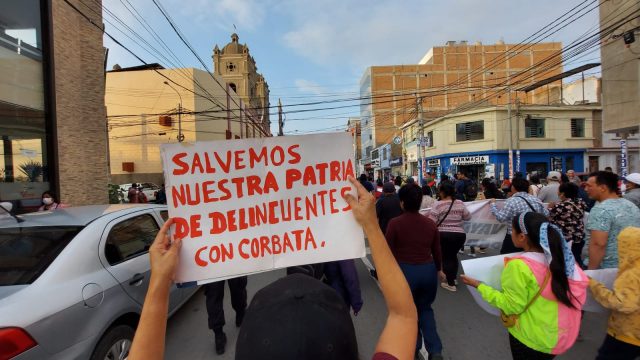The massive protests in Peru, which aggravate the political and institutional crisis that the country has been going through for years, have been in the streets for almost three weeks despite the brutal repression and with a series of demands that seek to reform the State from its roots.
The wave of protests, which account for almost 30 deceased demonstrators and which spread throughout the different Peruvian regions, especially in the so-called «Deep Peru», came to a head in early December when Congress decided to remove President Pedro Castillo for alleged «moral incapacity».
Parliament executed the measure after Castillo announced the dissolution of Congress, the establishment of an «exceptional emergency government», the call for a constituent process, the reorganization of the Justice system, among other conjunctural measures, such as governing with «law decrees», informs RT.
After the vacancy against the Head of State and the appointment of the then Vice President Dina Boluarte as the new president, thousands of people took to the streets to demand respect for the popular will that gave Castillo victory in the presidential elections.
Since then, the protesters have expressed four cross-cutting demands to return to normality. What are the requirements?1.- The release and return of Castillo to the Presidency
Since the beginning of the protests, the protesters have pointed out that, for them, the only «Constitutional President» is Pedro Castillo, because he was elected by the majority of the country in democratic elections. That is the main reason why they consider that he should return to power and assume responsibilities in front of the Executive.
In the same way, they consider that Castillo is a «political prisoner» who was detained and deprived of liberty by judicial bodies, unconstitutionally and violating the democratic rights of citizens.
This is an important point in the claims of Castillo’s followers, who have warned that they will remain in the streets to assert his rights and that they could even radicalize with an indefinite national strike, if their requests are not met.
2.- ‘Departure’ of Dina Boluarte or more protests
The protesters also demand that Dina Boluarte, appointed by parliament as President of the Republic, must leave the Executive, because it is «a usurping government», which in the opinion of the disaffected does not represent the popular mandate and is part of an «institutional and judicial coup» that was brewing against Castillo, since he assumed the presidency as head of State in 2021.
For Castillo’s followers, Boluarte is a «traitor» and a «puppet» who, according to them, has lent herself to the «political persecution» carried out against their leader by the «Peruvian right» and the «entrenched oligarchy in Congress, the Prosecutor’s Office and the judicial system.
In addition, they remember that Boluarte said that she would resign if Castillo was vacated, an issue that did not occur. Once the rural teacher was vacated, she went to Congress as vice president to be invested as president.
After her appointment, Boluarte announced that she would be in the Executive power, in front of the country, until 2026. However, in the face of social and political pressure, she has been changing her positions and currently insists that her government will be «transitional» and will seek to advance elections.3.- Protests to dissolve Congress
The dissolution of Congress, as Castillo announced before being dismissed, is another of the demands defended by the protesters, because they consider that the situation the country is currently facing is the responsibility of parliament, which has dedicated itself to «boycotting», restricting and controlling the Executive.
In their claims, they point out that the congressmen have exceeded their powers to influence the decisions that the Government should make independently. In addition, they believe that Congress has become a kind of «sect» or «mafia» that responds to the interests of «the oligarchy», which violates the popular will and democratic freedoms.
In this sense, they recall that Congress has been for years the epicenter of political conflicts in Peru and of the climate of ungovernability, after having vacated and forced the resignation of presidents Pedro Pablo Kuczynski, Martín Vizcarra and Castillo.
4.- Call a Constituent Assembly
When Castillo made the announcement that he was dissolving the Peruvian Congress, he also took up a crucial point in his presidential campaign, and that is to convene a constituent process that allows reforming the State and the Constitution in force since 1993.
Thus, the demonstrators have taken this demand as a transversal point that must be translated into the convocation of the Constituent Assembly, which allows Peruvians to change the current clash of powers between the Legislative and the Executive, which can ‘dissolve each other’, if certain ‘requirements’ are met, which contributes to the governance crisis.
But in addition, the people who are protesting, believe that the constituent reform that Castillo defends should aim at the total renewal of parliament, which has low levels of popularity, as well as a restructuring of the justice system, which has added to the confrontation and accentuated the political crisis.


